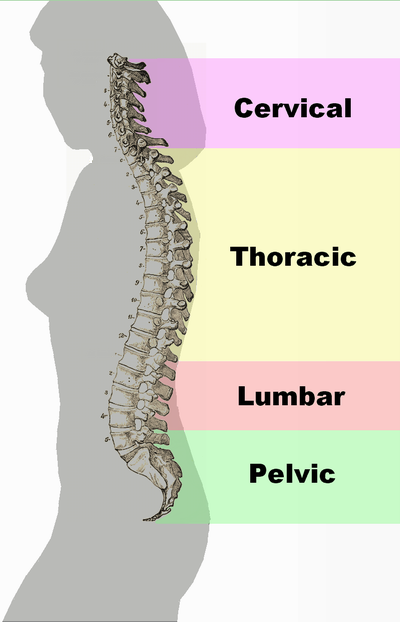|
|
| Line 18: |
Line 18: |
|
| |
|
| {{SK}} Lumbago; backache; dorsalgia | | {{SK}} Lumbago; backache; dorsalgia |
|
| |
| ==Underlying causes==
| |
| Transient back pain is likely one of the first symptoms of [[influenza]].
| |
|
| |
| Muscle strains (pulled muscles) are commonly identified as the cause of back pain, as are muscle imbalances. Pain from such an injury often remains as long as the muscle imbalances persist. The muscle imbalances cause a mechanical problem with the skeleton, building up pressure at points along the spine, which causes the pain. [[Ligament]] strain is a very common cause of back pain as well [http://wehelpwhathurts.homestead.com/ligamentpain.html].
| |
|
| |
| Another cause of acute low back pain is a Meniscoid Occlusion. The more mobile regions of the spine have invaginations of the synovial membrane that act as a cushion to help the bones move over each other smoothly. The synovial membrane is well supplied with blood and nerves. When it becomes pinched or trapped it can cause sudden severe pain. The pinching causes the membrane to become inflamed, causing greater pressure and ongoing pain. Symptoms include severe low back pain that may be accompanied by muscle spasm, pain with walking, concentration of pain to one side, and no [[radiculopathy]] (radiating pain down buttock and leg). Relief should be felt with flexion (bending forward),and exacerbated with extension (bending backward).
| |
|
| |
| When back pain lasts more than three months, or if there is more radicular pain ([[sciatica]]) than back pain, a more specific [[diagnosis]] can usually be made. There are several common causes of back pain: for adults under age 50, these include [[ligament]] strain, nerve root irritation, [[spinal disc herniation]] and [[degenerative disc disease]] or isthmic spondylolisthesis; in adults over age 50, common causes also include [[Osteoarthritis|osteoarthritis (degenerative joint disease)]] and [[spinal stenosis]] [http://www.spine-health.com/topics/cd/tlbp/type01.html],trauma, cancer, infection, fractures, and inflammatory disease [http://www.ninds.nih.gov/disorders/backpain/backpain.htm]. Non-anatomical factors can also contribute to or cause back pain, such as [[Stress (medicine)|stress]], repressed anger,[http://www.prevention.com/article/0,5778,s1-1-77-24-928-1,00.html] or [[depression (mood)|depression]]. Even if there is an anatomical cause for the pain, if depression is present it should also be treated concurrently.
| |
|
| |
| New attention has been focused on ''non-discogenic back pain'', where patients have normal or near-normal MRI and CT scans. One of the newer investigations looks into the role of the [[dorsal ramus]] in patient's pain that have normal radiographic evidence. See [[Posterior Rami Syndrome]]. [[Diagnostic musculoskeletal ultrasonography]] has been shown to be helpful in objectifying multifidus atropy.
| |
|
| |
|
| |
|
| |
| The avoidance of high impact, weight-bearing activities and especially those that asymmetrically load the involved structures such as: extensive twisting with lifting, single-leg stance postures, stair climbing, and repetitive motions at or near the end-ranges of back or hip motion can ease the pain.
| |
|
| |
| Direct bending to the ground without bending the knee causes severe impact on the lower back in pregnancy and in normal individuals, which leads to strain, especially in the lumbo-saccral region that in turn strains the multifidus.
| |
|
| |
|
| ==See also== | | ==See also== |
